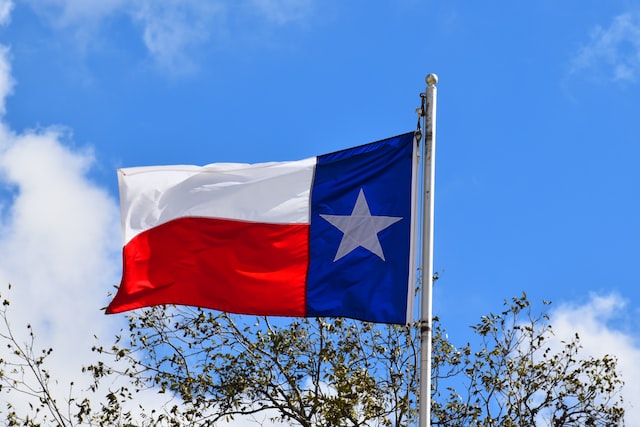For the past one and a half years, Governor Greg Abbot has kept border security as the main priority of his term in office, as well as the focus of his reelection campaign.
$4 billion has been put on the line for this, initiating a border wall construction, not to mention dispatching National Guard servicemen and state police in the thousands for the purpose of patrolling the Mexico border over consecutive months, as part of what is called Operation Lone Star.
Over the course of 18 months, Abbott has made unprecedented moves in order to control illegal immigration, such as apprehending and jailing some migrants on the basis of state criminal charges, pouring millions into bus tickets for carting them off to other cities, and nearly stopping trade with Mexico for a few days to drive up the inspection of commercial trucks which were entering the state. Abbott has time and again blamed President Biden for the rise in migrant numbers, also calling for the federal government to bring back the tougher migration policies which were in effect during President Trump’s reign.
Despite all this, the migrant numbers officials continue to encounter at the border are higher than before Operation Lone Star officially commenced, per data supplied by Customs and Border Protection. The Texas–Mexico border has witnessed 116,976 migrants in August—a number that’s higher than the 109,456 back in March 2021, which was when the mission began. It shows a failure of the governor’s office’s touted desire to “stop this revolving door and deter others considering entering illegally.”
The number of migrant encounters that occurred at the whole southwest border in August, which was provided by federal authorities, was over 2 million. There is no historical precedent for this, and authorities project a rise to 2.3 million by the time this fiscal year ends Friday.
Abbott touts successes in the weekly border mission updates, citing 334,000 migrant apprehensions carried out by state officials, seizures of 5,500 weapons, 19,000 criminal arrests, and other statistics, “All of which would have otherwise made their way into communities across Texas and our country thanks to President Biden’s open border policies,” according to his spokesperson Renae Eze.
Still, the unrelenting pace of immigrants trying to come into the country draws criticism of the state policy aimed at stemming border crossing, which is now costing as much revenue as could be had from a public university’s college tuition and fees. Abbot and supporters still hold to the view that the mission is working, saying border crossings would be more in number without the measures the governor has enacted.
“As border communities have been overrun and overwhelmed by this ongoing crisis, Texas has sent significant resources to help our local partners, including financial and law enforcement support and busing migrants to sanctuary cities Washington, D.C., New York City, and Chicago to provide relief,” said Eze in a statement. “Until President Biden and Congress step up and do their jobs to secure the border, Texas will continue utilizing every strategy to protect Texans and Americans.” Eze failed to mention anything about the increased migrant encounters since Operation Lone Star began.
Abbot happens to be the latest in a line of leaders who have had to deal with the issue of governing the border. Citing numbers is easy, and so is accusing opponents, but a number of factors which drive migration are not in the leader’s control. Abbot does accuse Biden of being responsible for the heightened migrations, but it remains a fact that court rulings have preserved the immigration restriction left in place by Trump. While Biden did attempt to dispose of Title 42—a public health order from the pandemic era which had immigration authorities block migrants including asylum seekers from entering the country—the move was blocked by a federal judge in May.
The recent win that the Biden administration scored was this summer, thanks to the SC ruling in June that the “remain in Mexico” policy could be discarded. Said policy required seekers of asylum to remain in Mexico for the duration it took authorities to decide on their applications. Biden completely lifted this policy in August.
Critics have said that Abbot should explain the reason behind migrant encounter numbers as reported by federal authorities remaining high well after a year into Operation Lone Star going into effect. “The state’s goal is deterrence. That’s what they’re saying. The governor says it, the Senate leadership says it. The whole leadership says it,” said immigration policy analyst Jaime Puente. “Clearly, it’s not working because people are still coming.”
In Abbott’s favor, he has weathered complaints that his policy is insufficient.
“They’ve built more walls, that’s great. They’ve seized more drugs, obviously that’s good. There are safety additions that have happened because of Operation Lone Star,” said former Trump immigration official Ken Cuccinelli. “But the numbers crossing the Texas border have gone up, not down. So that element of it has not been successful.”
Migrant encounters are basically the number of people Border Patrol agents arrest between ports of entry. Also part of that number are those denied admission into the U.S. at one of the ports of entry. This can cover asylum-seekers who are sent back to Mexico, those sent back to their home country, and even those allowed into the U.S. while awaiting the asylum application processing.
Migrant encounters makeup just one measure of how well any immigration policy is working, and they are imperfect too—the state has no control over external factors behind the timing of migrants trying to cross over. The statistic also fails to measure the number of people who successfully cross the border by evading detection.
